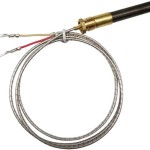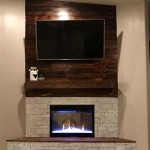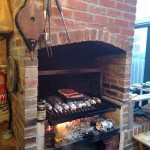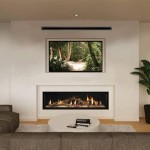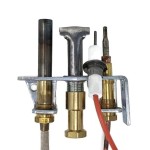Freestanding Wood Fireplaces: A Comprehensive Guide
Freestanding wood fireplaces, also known as wood stoves, are heating appliances designed to sit independently in a room. Unlike traditional fireplaces built into walls, these units offer greater flexibility in placement and often provide superior heating efficiency. This article will explore the key features, benefits, installation considerations, and maintenance requirements associated with freestanding wood fireplaces.
Efficiency and Heating Capacity
One of the primary advantages of a freestanding wood fireplace is its enhanced heating efficiency compared to open fireplaces. Traditional fireplaces often lose a significant amount of heat up the chimney, while freestanding models are designed to retain and radiate heat into the room. Modern wood stoves are often made from cast iron or steel, materials known for their excellent heat retention properties. Many models also incorporate advanced combustion technologies, such as secondary combustion systems, which burn off gases and particulate matter that would otherwise escape up the chimney. This process increases the efficiency of the stove and reduces emissions.
The heating capacity of a freestanding wood fireplace is typically measured in British Thermal Units (BTUs). The appropriate BTU rating for a given space depends on several factors, including the size of the room, the level of insulation, and the climate. It is crucial to select a stove with a BTU rating that corresponds to the heating needs of the area to be heated. An undersized stove may struggle to maintain a comfortable temperature, while an oversized stove can lead to overheating and inefficient fuel consumption.
In evaluating efficiency, it is also important to consider the stove's EPA certification. The Environmental Protection Agency (EPA) sets standards for wood stove emissions, and certified stoves are designed to burn cleaner and more efficiently than non-certified models. EPA-certified stoves typically use less wood and produce fewer pollutants, contributing to improved air quality and lower fuel costs.
Installation and Placement Considerations
Proper installation is paramount for the safe and efficient operation of a freestanding wood fireplace. It is generally recommended to consult with a qualified installer to ensure that the stove is installed according to local building codes and manufacturer's instructions. Key considerations during installation include the selection of an appropriate location, the installation of a proper chimney or venting system, and the provision of adequate clearances from combustible materials.
The location of the stove should allow for optimal heat distribution throughout the room. Ideally, the stove should be placed in a central location where it can radiate heat in multiple directions. It is also important to consider the placement of furniture and other objects that could obstruct the flow of heat. Freestanding wood fireplaces require non-combustible flooring beneath them, such as stone, tile, or metal. The size of the hearth pad should exceed the minimum requirements specified by the manufacturer and local building codes. These are installed to protect the floor from embers or sparks that may escape when the stove door is open.
A properly installed chimney or venting system is critical for safely exhausting smoke and combustion gases from the stove. The chimney should be constructed of materials that are suitable for the high temperatures and corrosive gases produced by wood burning. The chimney should also be of the correct height and diameter to provide adequate draft. It is important to inspect the chimney regularly for creosote buildup and to have it cleaned periodically to prevent chimney fires.
Maintenance and Safety
Regular maintenance is essential for ensuring the safe and efficient operation of a freestanding wood fireplace. This includes cleaning the stove, inspecting the chimney, and properly storing firewood. The stove should be cleaned regularly to remove ash and debris. Ash buildup can reduce the efficiency of the stove and increase the risk of chimney fires. It is advisable to allow the ashes to cool completely before removing them and to dispose of them in a metal container with a tight-fitting lid.
Regular chimney inspections are crucial for preventing chimney fires. Creosote is a highly flammable substance that can accumulate inside the chimney as a byproduct of wood burning. If creosote buildup becomes excessive, it can ignite and cause a dangerous chimney fire. It is recommended to have the chimney inspected and cleaned by a qualified professional at least once a year, or more frequently if the stove is used frequently.
Proper firewood storage is also important for safety and efficiency. Firewood should be stored in a dry, well-ventilated area to prevent rot and mold growth. Wet or damp firewood burns less efficiently and produces more smoke and creosote. It is also important to keep firewood away from the stove and other heat sources to prevent it from drying out too quickly or catching fire.
Finally, proper usage is essential for safety. Users should never burn trash, treated wood, or other materials that can produce toxic fumes or damage the stove. It is equally vital to supervise the stove while it is in operation and to keep children and pets away from the hot surfaces. Installing a carbon monoxide detector in the vicinity of the stove can provide an early warning of carbon monoxide poisoning, which is a potentially deadly hazard associated with wood burning appliances.

Freestanding Wood Burning Stoves Sierra Hearth And Home

Studio 2 Freestanding Wood Burning Stove Stovax Stoves
Dru Freestanding Wood And Multi Fuel Stoves Fires

Suspended Fashion Indoor Freestanding Wood Burning Stove China Weather Resistant Fireplaces Made In Com

Wood

What Is A Freestanding Wood Stove Fireplace Service Experts

Adf 1000 Nmv Freestanding Wood Fireplace Hawkesbury Heating

I Love This Fireplace Modern Freestanding Design

Contemporary Freestanding Fireplaces Modern Suspended Wood Heaters

Wood Stove Indoor Heating Modern Freestanding Burning Efficient Fireplace China Weather Resistant Fireplaces Made In Com


